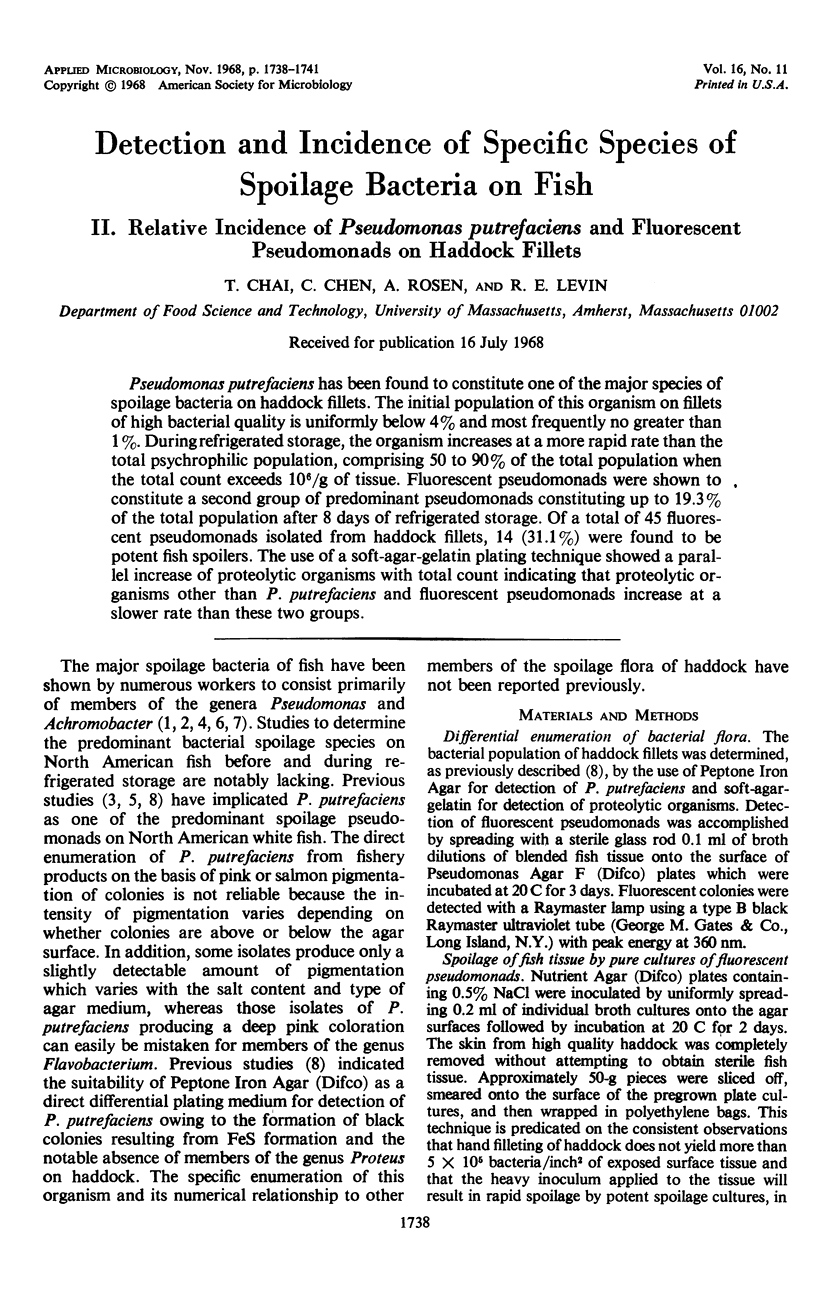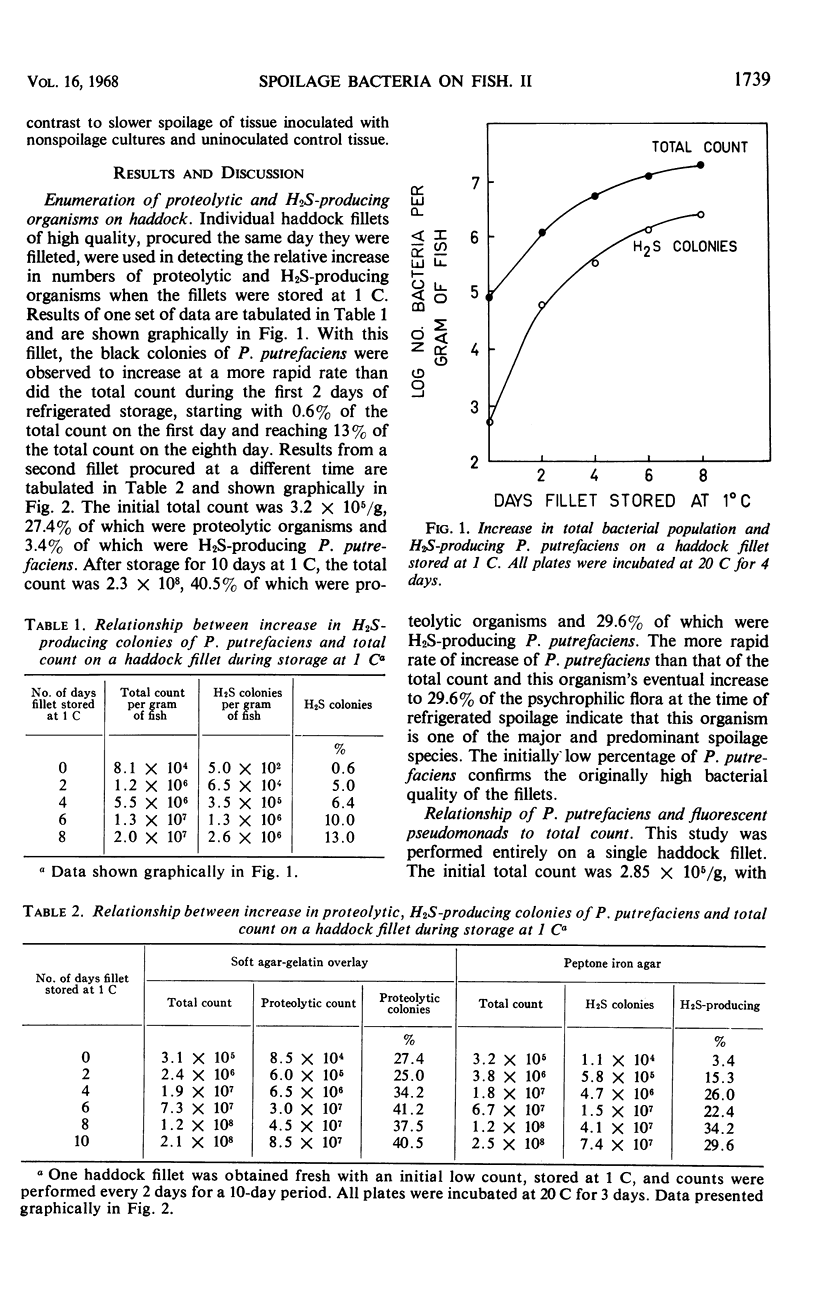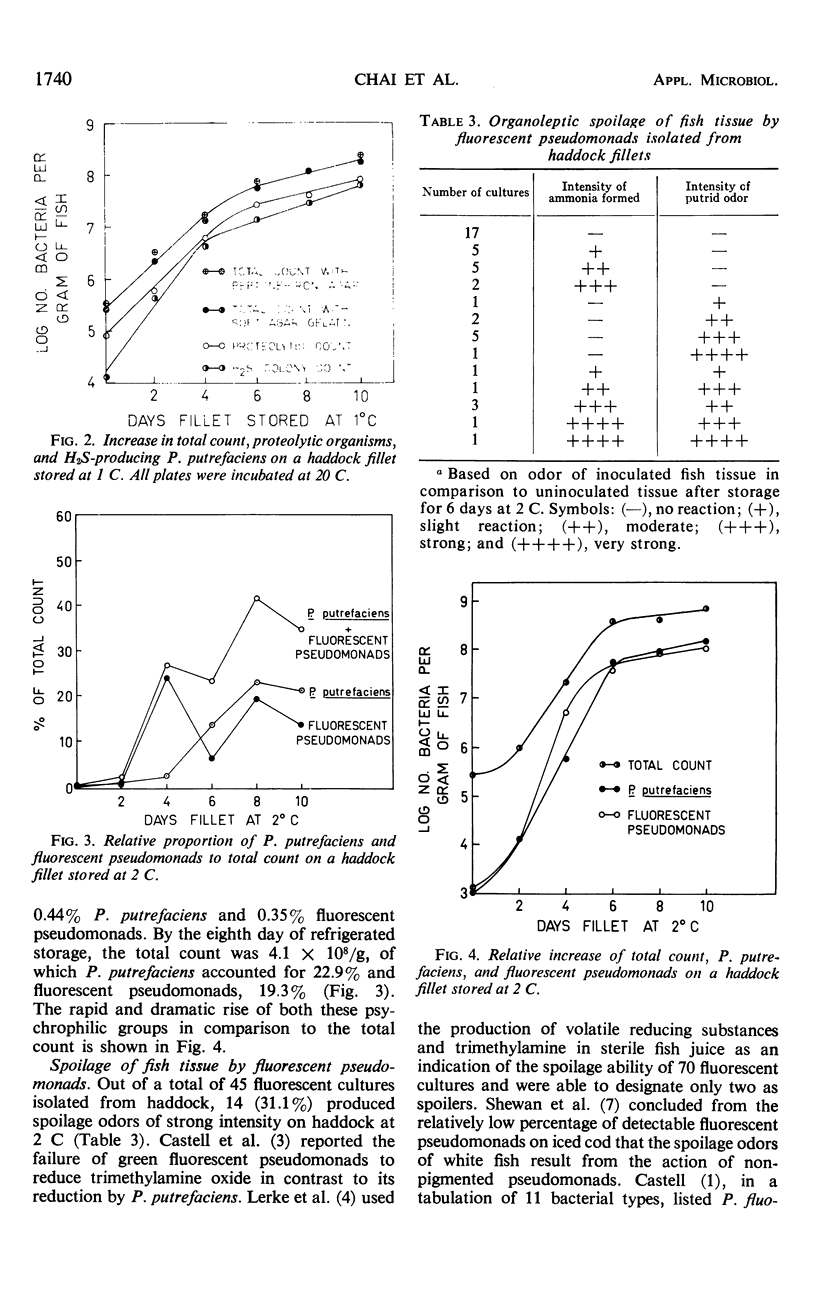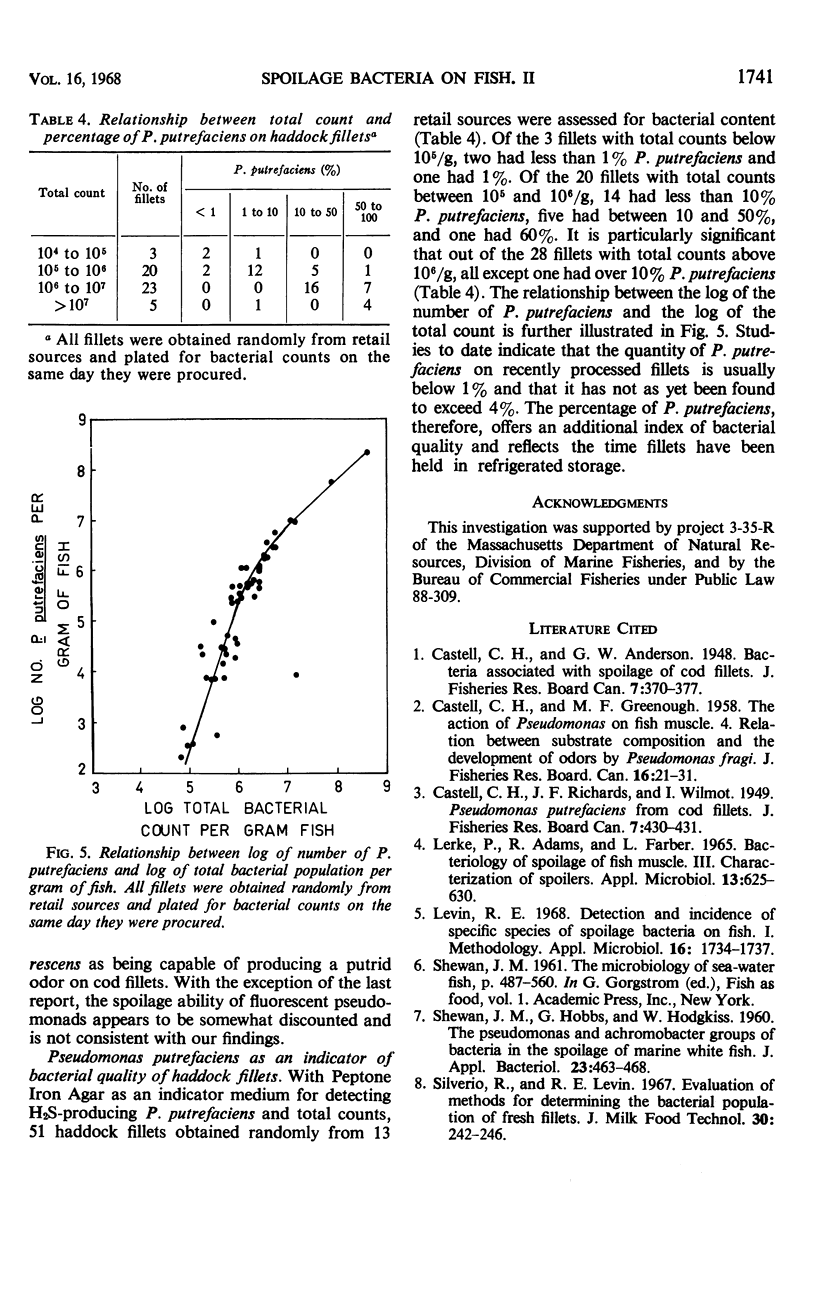Abstract
Pseudomonas putrefaciens has been found to constitute one of the major species of spoilage bacteria on haddock fillets. The initial population of this organism on fillets of high bacterial quality is uniformly below 4% and most frequently no greater than 1%. During refrigerated storage, the organism increases at a more rapid rate than the total psychrophilic population, comprising 50 to 90% of the total population when the total count exceeds 106/g of tissue. Fluorescent pseudomonads were shown to constitute a second group of predominant pseudomonads constituting up to 19.3% of the total population after 8 days of refrigerated storage. Of a total of 45 fluorescent pseudomonads isolated from haddock fillets, 14 (31.1%) were found to be potent fish spoilers. The use of a soft-agar-gelatin plating technique showed a parallel increase of proteolytic organisms with total count indicating that proteolytic organisms other than P. putrefaciens and fluorescent pseudomonads increase at a slower rate than these two groups.
Full text
PDF



Images in this article
Selected References
These references are in PubMed. This may not be the complete list of references from this article.
- LERKE P., ADAMS R., FARBER L. BACTERIOLOGY OF SPOILAGE OF FISH MUSCLE. 3. CHARACTERIZATION OF SPOILERS. Appl Microbiol. 1965 Jul;13:625–630. doi: 10.1128/am.13.4.625-630.1965. [DOI] [PMC free article] [PubMed] [Google Scholar]
- Levin R. E. Detection and incidence of specific species of spoilage bacteria on fish. I. Methodology. Appl Microbiol. 1968 Nov;16(11):1734–1737. doi: 10.1128/am.16.11.1734-1737.1968. [DOI] [PMC free article] [PubMed] [Google Scholar]



